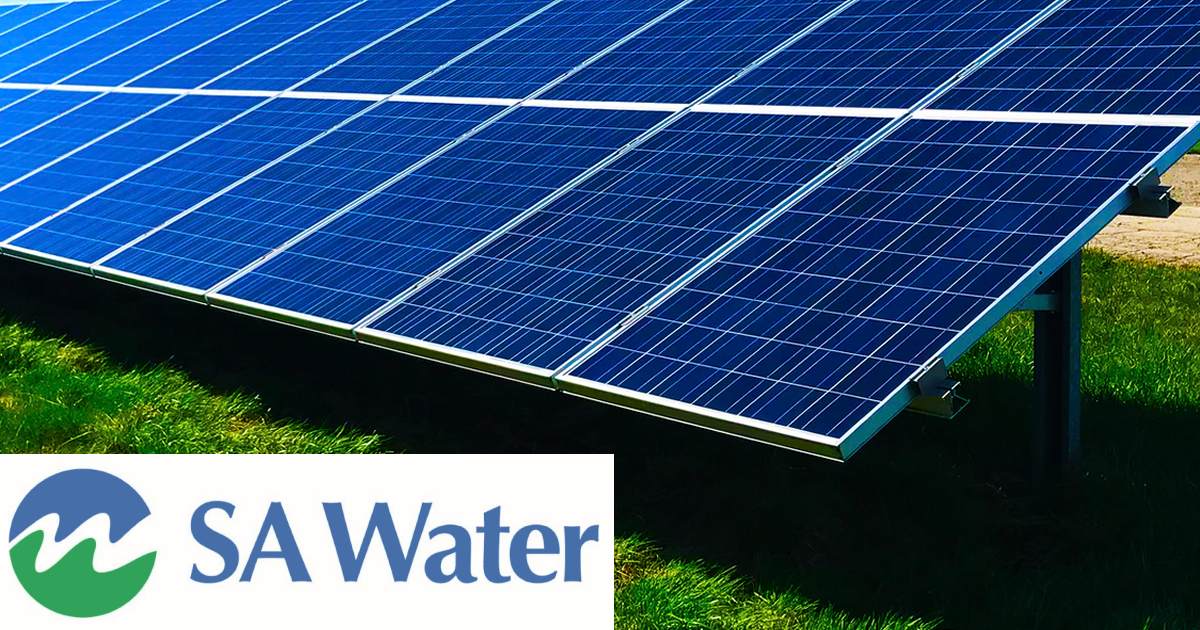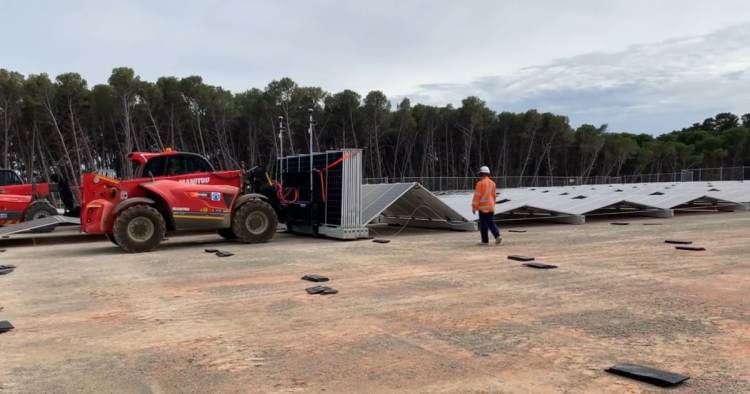
Hundreds more solar panels are helping to power SA Water’s drinking water network for customers north of Adelaide, and the utility is in the midst of installing tens of thousands more in Adelaide’s south.
As part of its Zero Cost Energy Future initiative, approximately 240 solar panels have been installed at an SA Water booster pumping station in the town of Mallala, around 60 kilometres north of Adelaide.
The ground-mounted panels are expected to generate 146 megawatt-hours of green electricity a year while avoiding 62 tonnes of emissions annually.
30,000-Panel Rollout At Happy Valley Reservoir
Last week, SA Water announced the first solar panels for the world’s largest fully redeployable, single-location solar energy system were in place at Happy Valley Reservoir, which provides drinking water to more than 40 per cent of SA Water customers across metropolitan Adelaide.

Australian company 5B’s Maverick system is being used for the project – a modular, folding pre-fabricated solar panel and racking solution including ballast.
The Happy Valley project will generate more than 17,000 megawatt hours of energy per year, and avoid 7,600 tonnes of emissions annually.
“This is such an exciting project that will make a real difference to our operations, and ultimately, by working towards our zero cost energy future, we aim to sustainably keep prices low for our customers,” said SA Water Chief Executive David Ryan.
Zero Cost Energy Future Progress
SA Water is one of South Australia’s largest electricity consumers. The utility’s electricity costs were around $83 million in 2019-20, providing plenty of motivation for the utility to keep pushing ahead with slashing its energy costs through the use of solar power.
The Zero Cost Energy Future initiative involves a total of around 500,000 solar panels along with 34 MWh of battery storage. To date, more than 160,000 panels have been installed through the program.
When complete, the collective solar capacity installed under the initiative is expected to generate 242 gigawatt-hours of clean electricity a year; equivalent to the annual electricity consumption of more than 48,000 South Australian households.
COVID-19 posed a threat to the rollout, but advanced procurement of solar panels and COVID-Safe work practices has helped keep the project moving along.
“Not only has this kept the project on schedule, but it’s also sustained work for our contract partners and suppliers working on projects across regional South Australia, providing flow-on benefits to the state’s economy,” said SA Water’s Nicola Murphy.
Well, it doesn’t appear to be on schedule as all panels were originally meant to be installed by the end of this year, but this is a huge undertaking with everyone to be a winner, including the environment.
And on that point: beyond just whacking in a bunch of solar panels, SA Water has also been engaging in revegetation work at some locations as part of the project, including rehabilitating what were previously dry and dusty weed-ridden cropping and grazing paddocks with native grasses and saltbush.
“This initiative was designed by our people, and shows South Australians leading the way with the smarts and skills to integrate renewable energy and storage within the longest water network in the country,” said Ms. Murphy.

 RSS - Posts
RSS - Posts



Speak Your Mind